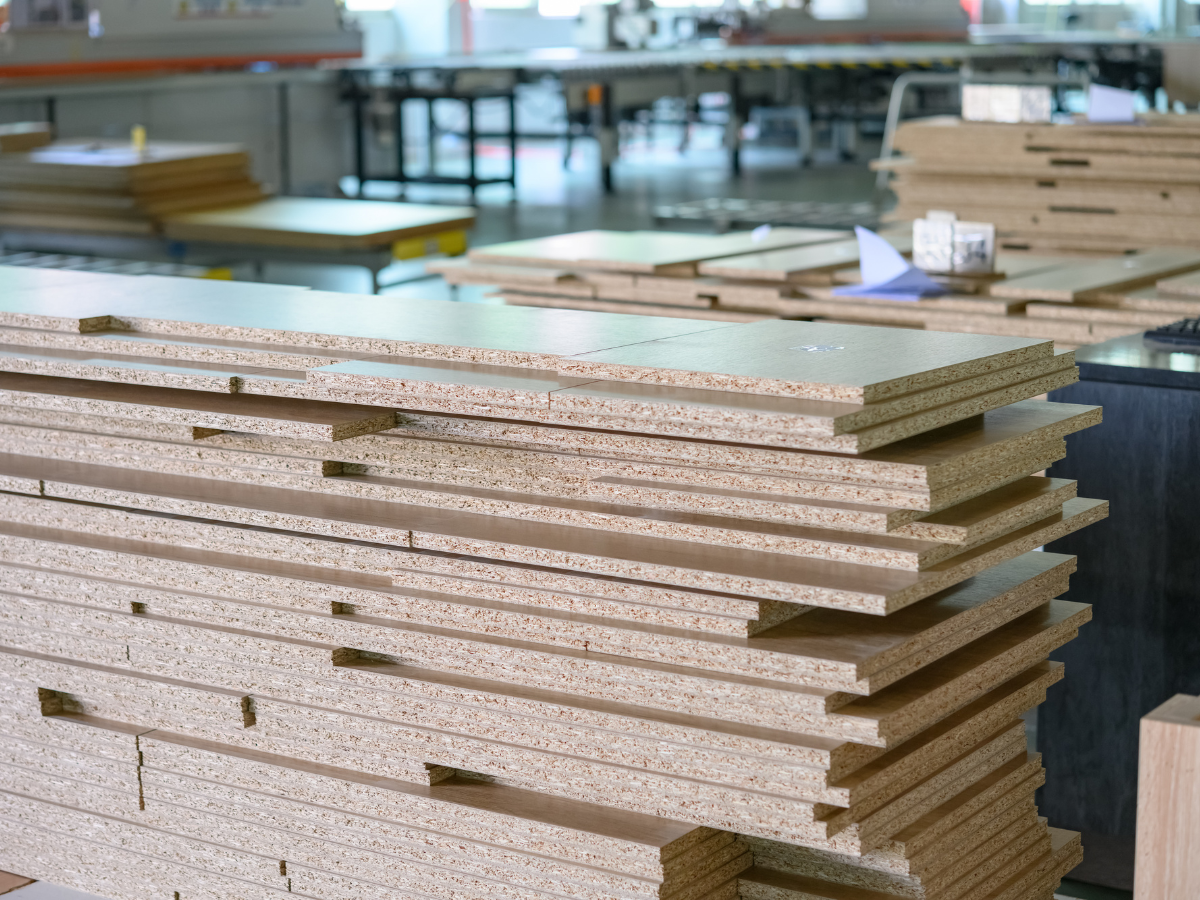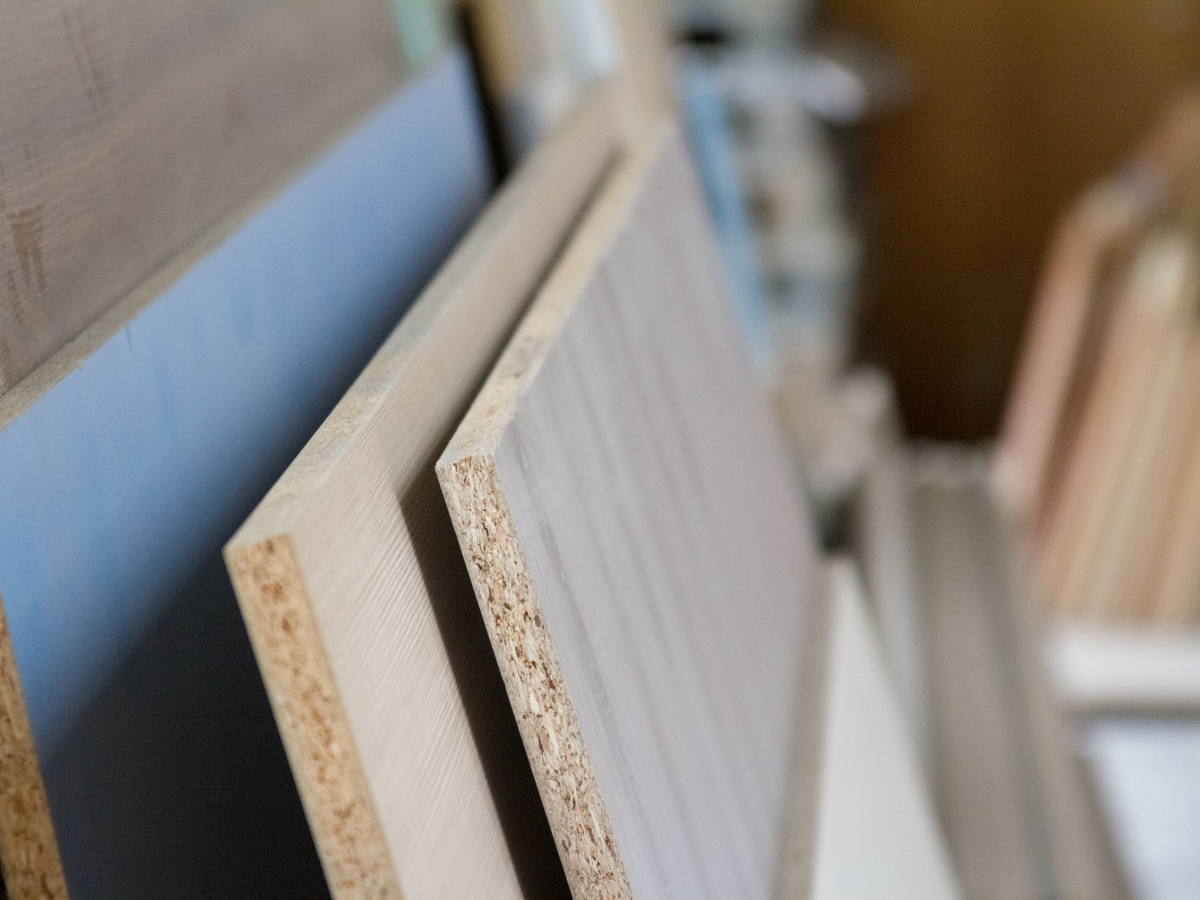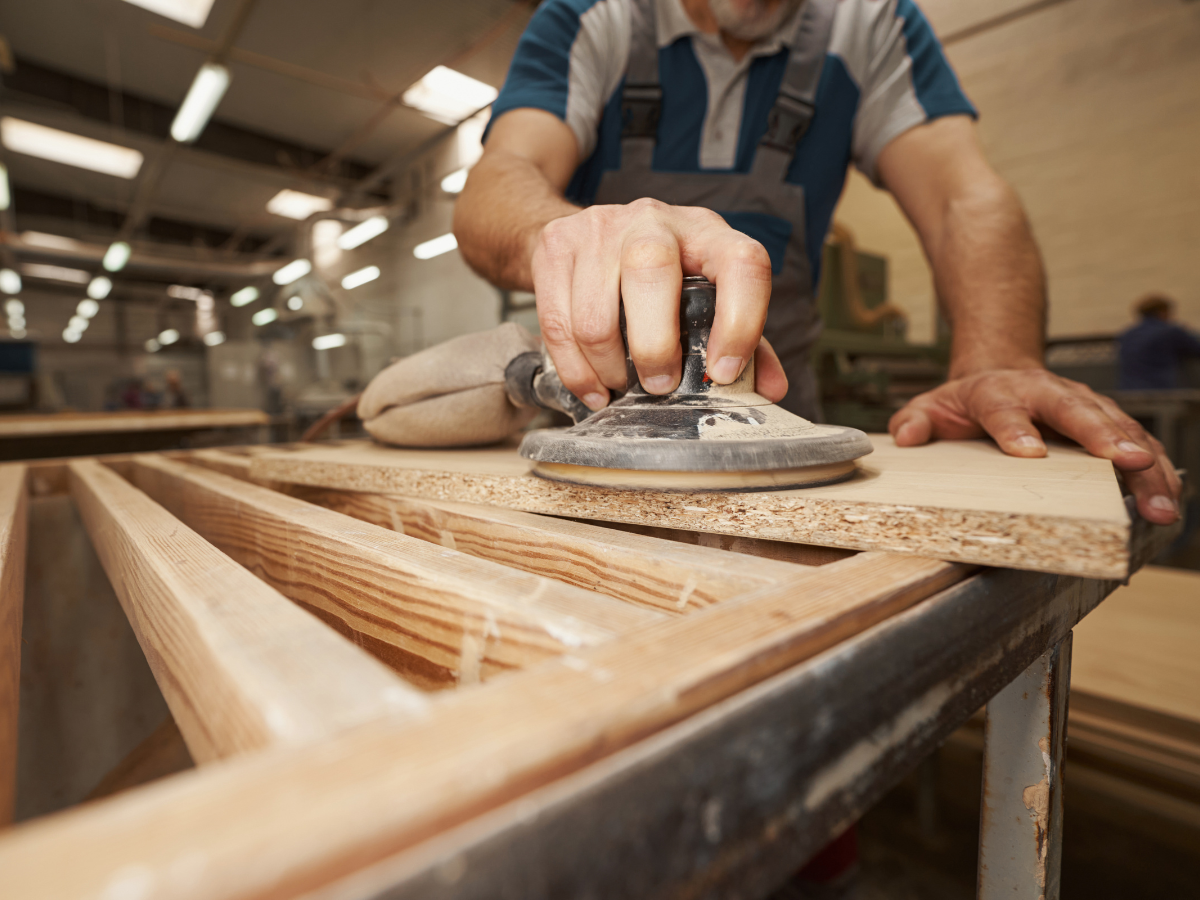MDF (Medium-Density Fibreboard) in Custom Millwork: Material Guide, Buying Tips, DIY Ideas & Installation Steps

MDF panels and custom millwork applications in modern interior design
Medium Density Fibreboard (MDF) is an engineered wood product made from fine wood fibres, resin, and wax compressed under heat and pressure into smooth, dense panels. Compared to natural wood or particle board, MDF offers superior workability, takes paint exceptionally well, and is available in various thicknesses. It's ideal for interior projects like furniture, cabinetry, shelves, wall paneling, and interior trim. The benefits include affordability, ease of machining, a flawless finish, and a sustainable manufacturing process that often uses recycled wood fibres.
What is Medium Density Fiberboard (MDF)
Medium-Density Fiberboard (MDF) is a high-performance engineered wood product designed to provide a smooth, consistent, and affordable alternative to natural wood. Manufactured by compressing wood fibers with resin and wax under heat and pressure, MDF eliminates the imperfections commonly found in solid lumber like knots, warping, and grain variation, making it a favorite among carpenters, builders, and DIYers alike.
Unlike solid wood, which comes with natural inconsistencies like knots and grain variations, MDF offers a smooth surface and uniform density across the entire panel. This is achieved by breaking down wood into fine fibres, combining them with wax and resin, and compressing them under high temperature and pressure. The result? Panels that are denser than particle board and, in many applications, more predictable than natural wood.
Large-scale MDF production took off in the 1980s, and since then, it has become a go-to building material for everything from cabinet making to interior trim. It's particularly valued where a flat, smooth finish is needed, such as for painted furniture or decorative wall panels.
Today, the term "MDF" is widely used for any dry-process fiberboard in the same density range, and manufacturers offer it in various thicknesses, grades, and finishes to suit different project needs.
Physical Properties of MDF

MDF panels in various thicknesses ready for custom millwork applications
To understand why MDF performs so well, you need to look at its physical makeup. Standard MDF typically contains:
- 82% wood fibre – these are refined from hardwood or softwood species, giving the board its density and strength.
- 9% urea-formaldehyde resin glue – this binds the fibres together.
- 8% water – necessary during manufacturing.
- 1% paraffin wax – improves moisture resistance.
The density of MDF generally ranges between 500 and 1,000 kg/m³, depending on whether it's light, standard, or high density. For example:
| MDF Type | Density (kg/m³) | Typical Use |
|---|---|---|
| Light Density | 500–650 | Decorative panels, low-load furniture |
| Standard Density | 650–800 | Cabinets, shelving, interior trim |
| High Density | 800–1,000 | Flooring underlayment, heavy-duty applications |
Interestingly, hardwood MDF at around 700–720 kg/m³ can be less dense than softwood MDF of the same density, because the fibre structure affects how the board compresses.
MDF is easier to machine than particle board, meaning it cuts cleanly without chipping. Its smooth finish also means less prep before painting or veneering. However, due to its resin content, proper sealing is important to minimize emissions of volatile organic compounds (VOCs).
The manufacturing process involves:
- Chipping raw wood
- Defibrating into fine fibres
- Coating with wax and resin
- Forming mats of fibre
- Hot pressing into panels
This process ensures that every panel has consistent thickness, density, and strength, ready for a wide range of uses.
MDF vs Other Materials

MDF panels in various thicknesses ready for custom millwork applications
When choosing between MDF, plywood, particle board, and natural wood, each has its pros and cons, but MDF stands out in certain scenarios.
Compared to Solid Wood:
- MDF has no knots, warping, or grain variation
- It's more stable in controlled indoor environments
- It doesn't split easily when cut, but it can be heavier
Compared to Plywood:
- MDF offers a smoother, flatter surface ideal for painting
- Plywood has greater moisture resistance and strength for structural uses
- MDF edges machine more cleanly, making it better for intricate designs
Compared to Particle Board:
- MDF is denser and more durable
- It holds screws better when pre-drilled
- It gives a much better smooth finish for paint or veneer
MDF vs Plywood vs Solid Wood - Comparison Table
| Feature / Material | MDF | Plywood | Solid Wood |
|---|---|---|---|
| Surface Finish | Perfectly smooth, no knots or grain, ideal for paint | Visible wood grain, may require filler for paint | Natural grain, varies by species |
| Machinability | Excellent for routing and detailed profiles | Good for cutting and drilling, edges may splinter | Can chip or split along grain |
| Strength | Strong in compression, weaker in bending | Very strong in bending and shear strength | Strong in all directions but prone to warping |
| Moisture Resistance | Low (unless MR-MDF used) | Good to excellent depending on grade | Varies by species |
| Cost | Low to moderate | Moderate to high depending on grade | High, especially for premium hardwoods |
| Best Uses in Millwork | Painted cabinet doors, mouldings, wall panels | Structural cabinet boxes, subflooring | High-end furniture, exposed woodwork |
That's why both MDF and plywood are popular in cabinetry and furniture making, but MDF wins when the priority is a flawless painted surface or cost-effective veneering.
It's worth noting that MDF is primarily for indoor use due to its moisture vulnerability. For kitchens and bathrooms, it must be properly sealed or laminated to withstand humid conditions.
Uses in Construction
In the construction world, MDF shines in interior applications where precision and aesthetics matter more than raw strength.
Common uses include:
- Interior trim – skirting boards, architraves, and crown moulding
- Wall paneling – decorative wainscoting, slatwall panels
- Cabinet carcasses – especially for kitchens and offices
- Shelving – for built-ins and storage systems
MDF's smooth, knot-free surface makes it an excellent substrate for paint, allowing for perfectly even finishes without heavy sanding. Many builders prefer factory-primed MDF mouldings, which cut down on on-site finishing time and provide a professional-grade appearance.
A note on safety: MDF contains formaldehyde-based resins, which release small amounts of VOCs. While modern MDF has low formaldehyde emissions, sealing all surfaces with paint, lacquer, or veneer further reduces any off-gassing, making it safe for home interiors.
A premium option is veneered MDF, where a thin layer of real wood (such as oak or walnut) is applied to the MDF core. This delivers the look of genuine wood with the stability and affordability of MDF, perfect for doors, shelves, and decorative panels.
Cost-Effective Option
MDF is less expensive than genuine wood and plywood, offering the look of real wood at a more affordable price. MDF is easily available in various sizes, unlike oak, rosewood, or maple, making it a convenient option for projects.
MDF provides excellent economic value for furniture and construction needs, especially for large-scale projects or budget-friendly renovations. The cost-effectiveness of MDF makes it an attractive choice for DIY enthusiasts and professional contractors alike, allowing for more creative freedom and flexibility.
Applications in Custom Millwork

MDF panels in various thicknesses ready for custom millwork applications
Medium Density Fibreboard has become one of the most popular engineered wood products in the custom millwork industry. Its versatility, smooth surface, and affordability make it a favorite among manufacturers and custom furniture makers alike.
Common furniture applications include:
- Cabinets – from kitchen cabinets to office storage systems
- Tables and desks – offering a perfectly flat surface for both painted and laminated finishes
- Shelving units – for both decorative and functional purposes
- Bed frames and headboards – especially when paired with upholstery
Unlike natural wood, MDF doesn't have unpredictable grain patterns, making it easier to cut precise shapes for intricate designs like carved moldings or decorative cut-outs. It also takes paint exceptionally well, producing a flawless finish without the risk of grain telegraphing through.
Furniture makers often combine MDF with wood veneers to mimic the look of genuine wood while keeping production costs down. For example, an oak veneer on MDF can look identical to solid oak once finished, but at a fraction of the price and with better resistance to warping.
Why MDF works so well for furniture:
- Uniform density – cuts, drills, and shapes consistently
- Smooth finish – no filler needed before painting
- Versatility – compatible with laminates, veneers, and direct paint finishes
For both large-scale production and custom one-off pieces, MDF offers a combination of design flexibility and cost savings that's hard to match.
Environmental Considerations of MDF
Beyond its affordability and performance, MDF also offers eco-friendly advantages compared to some other wood products.
Sustainable sourcing: MDF is often made from recycled wood fibers and by-products from sawmills, meaning it reduces demand for virgin timber. This supports responsible forestry practices and minimizes waste.
Durability and longevity: Because MDF is stable and requires less fixing or replacement over time, it contributes to less material waste in the long run. Its fire-resistant properties (in certain grades) also improve safety in home interiors.
Low emissions: Modern MDF manufacturing follows strict environmental standards. Many products are certified to have low formaldehyde emissions, and when sealed with paint or veneer, VOC release is minimal.
Recyclability: While MDF can't be recycled in the same way as solid wood, it can be repurposed for other composite panel applications, extending the life of the original material.
In essence, MDF supports a circular economy model in woodworking, using what would otherwise be discarded and turning it into a durable, functional product for years of use.
Build It Right with CooperBuild: Expert Millwork Solutions
Medium Density Fibreboard has earned its place as a cornerstone material in modern custom millwork. From its smooth, uniform surface that makes painted finishes flawless, to its cost-effectiveness and precision machining, MDF is the smart choice for cabinet doors, wall panels, and mouldings.
CooperBuild's in-house millwork team have perfected the art of pairing the right material with the right application. For paint-grade projects, MDF is our go-to because it delivers the crisp lines, consistent quality, and design flexibility our clients demand. And when the job calls for extra strength or moisture resistance, we know exactly how to blend MDF with plywood, solid wood, or moisture-resistant grades for the perfect balance.
Contact CooperBuild's custom millwork services to discuss your project. Our team will review your requirements, recommend the right materials, and provide a clear plan and quote to get your millwork built and installed to specification.
FAQs
About CooperBuild Team
CooperBuild's in-house team brings expertise in custom millwork, engineered materials, and high-performance construction solutions for luxury projects in NYC.
Millwork & Construction Specialists
Subscribe to Our Newsletter
Get the latest insights, trends, and news from the construction industry delivered straight to your inbox.
We respect your privacy. Unsubscribe at any time.

